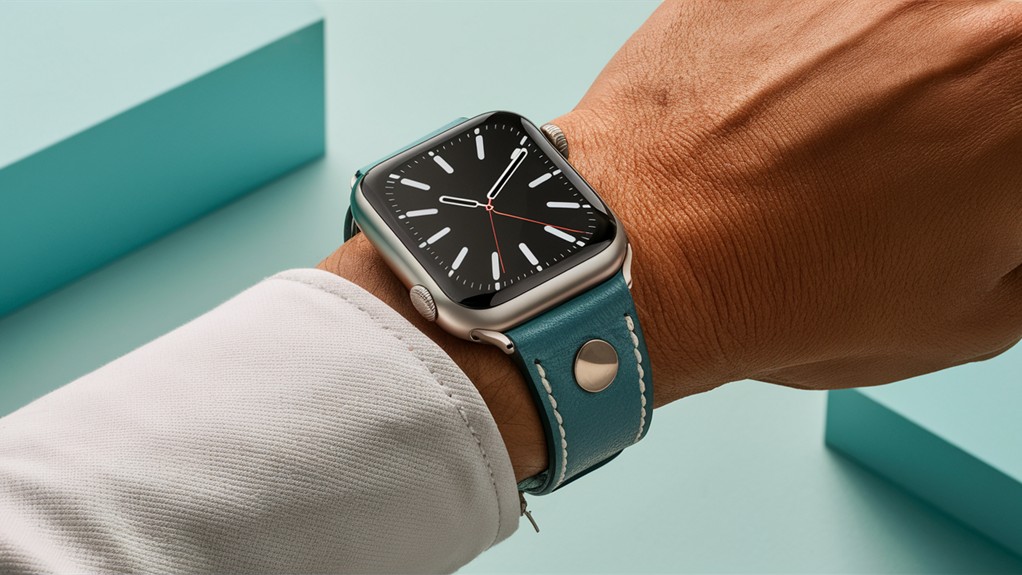If you want to test for real gold, there are a few methods you can try.
- You can check if it sinks in water, as real gold is dense and should sink.
- Another option is to use vinegar – if the gold doesn't change color, it's likely real.
- Look for manufacturer markings or stamps indicating the karat value as well.
- To be even more certain, you can perform a density test by weighing the gold and calculating its density, or use a nitric acid test.
It's important to remember that these tests aren't foolproof, so further analysis or professional assistance may be needed.
Our Highlighted Points
- Visual inspection and professional appraisal are important for determining the authenticity of gold jewelry.
- Size and weight comparison can help identify fake gold, as real gold is denser than most other metals.
- The magnet test can be used to check if gold jewelry is real, as real gold is not magnetic.
- Conducting density calculations and acid tests can provide further insights into the authenticity of gold.
Stamp Test: Look for Hallmarks
To test for real gold, start by using a magnifying glass to closely examine the jewelry for any hallmarks or official number markings. These hallmarks can provide valuable information about the gold's karat value and purity. Look for stamps that indicate the gold's purity under the Karat or Millesimal Fineness system. Genuine gold jewelry often displays these markings, which serve as a verification of its authenticity.
Keep in mind that older pieces may have worn off markings, so the absence of hallmarks doesn't necessarily mean the gold is fake. However, if the jewelry doesn't have any markings at all, it's important to be cautious as it may be fake.
In such cases, it's advisable to seek a professional appraisal or consider further testing using nitric acid to determine the real gold content.
Size and Weight Test
To accurately test for real gold, start by comparing the size and weight of the gold piece with a known real gold piece using a jeweler's scale or calipers. Real gold is denser than most other metals, so a piece that appears too large for its weight may be fake. This size and weight test is especially effective for coins and bars made of precious metals, such as gold.
Bullion coins, which serve as collectibles and investments, require this test to ensure authenticity. When conducting the test, make sure to place the gold piece on an unglazed ceramic plate to prevent any interference from other materials.
Magnet Test
Use a powerful neodymium magnet to determine if the gold is real. Here's how the magnet test works:
- Hold the magnet close to the piece of jewelry you want to test. Real gold shouldn't be attracted to the magnet, as it isn't magnetic. If the jewelry sticks to the magnet, it's likely made of base metals or is gold plated.
- If you suspect that the piece of jewelry is gold plated, you can perform an acid test to confirm. Apply a drop of nitric acid to a discreet area of the jewelry. If the acid causes the gold plating to fade and reveal a different metal underneath, then the jewelry isn't made of real gold.
- Keep in mind that this test may not be foolproof, especially if the piece of jewelry has a very thin layer of gold. In such cases, it's best to consult a professional or use other methods, such as the Karat system, to determine the authenticity of the gold.
Density Test
To test for real gold, you can calculate its density by weighing it and dividing the weight by its volume. Genuine gold typically has a density of around 19.3 g/cm³, so you can compare the calculated density to this known value. If there's a significant difference, it could indicate that the gold is fake.
This density test provides a quantitative measure of gold authenticity and is a reliable way to determine the purity of the precious metal. To perform the density test, you'll need a piece of unglazed ceramic, a set of testing kits that include nitric acid, and a scale to measure the size and weight of the gold.
Remember that nitric acid will dissolve gold plated or white gold, revealing its true purity numbers.
Acid Tests
To continue testing for real gold, you can utilize acid tests to further determine its authenticity. Acid tests involve using different types of acids to observe the reactions of the gold. Here's how you can conduct an acid test:
- Nitric acid test: Take a small scratch on the gold item and drop a few drops of nitric acid onto it. If the gold remains unchanged in color and doesn't react, it's likely genuine. However, if the gold turns green or black, it may be gold plated or fake.
- Vinegar test: Drop the piece of gold jewelry into a container of vinegar. Real gold won't change color or react to the vinegar, while fake gold may show signs of discoloration or a reaction.
- Aqua regia test: This test involves using a mixture of nitric acid and hydrochloric acid. If the gold dissolves in the aqua regia, it isn't genuine.
Conclusion
In conclusion, testing for real gold is a fascinating process that requires careful examination and analysis. By using methods such as the stamp test, size and weight test, magnet test, density test, and acid tests, one can uncover the authenticity of gold.
However, it's important to remember that these tests may not always provide a definitive answer and seeking professional assistance may be necessary.
So, the next time you come across a piece of gold, embark on the thrilling journey of testing its authenticity and uncover its true value. You can start by conducting a simple acid test or taking it to a reputable jeweler for a professional evaluation. Once you confirm its authenticity, you may be surprised to learn the many surprising uses of gold, from being a crucial component in modern electronics to its medical applications in treating certain conditions. The journey of discovering the true value of gold goes far beyond its monetary worth and can reveal its fascinating role in various industries and technologies.


